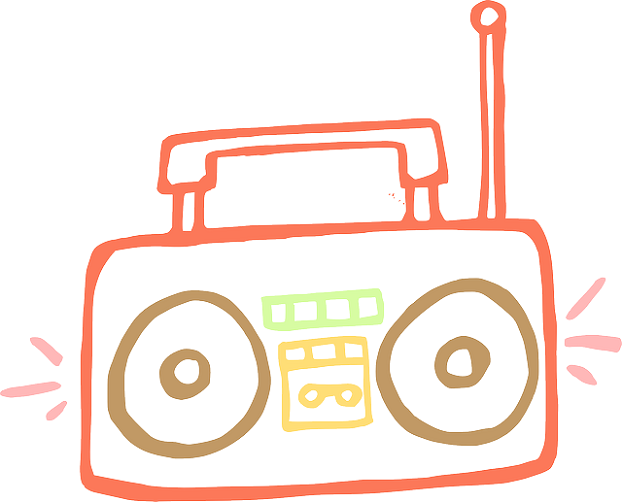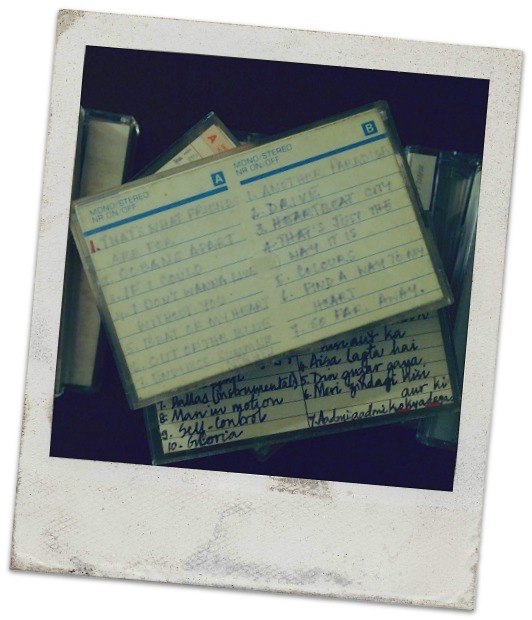
The faint strains of a song wafting down the hallway was way more interesting than the grown-ups’ conversation I was stuck being a spectator to in the living room of the house of my cousin once-removed. I abandoned the adults and followed the sound to the half-closed bedroom door of said cousin and pushed it gently. Through the widening crack I saw her hunched over a composition book at her desk, her finger following the black words on the page as she sang along with a small radio to her left. She looked up as my head rounded the door fully and beckoned me in with her free hand. The lyrics on the page were unfamiliar and the music on the radio nothing like I’d ever heard before. I stood entranced by the side of the table and watched and listened.
And that is how I discovered Carlos Santana’s “Black Magic Woman” — and a whole new genre of music. It was quite by accident and very unlike Questlove’s act of revolution (“How to Find Music You’ll Fall in Love With”)
A serendipitous and even more spectacular discovery was that the one radio station in 1970s Bangalore actually played “Western music.” Sunday mornings, for about half an hour or an hour, I forget now, the show was anchored by a woman with a terrific voice and the diction of the Queen of England.
“But from that day on, Sunday mornings found me on the floor next to our radio.”
Until then, all I’d listened to was movie songs from various Indian language films, Carnatic music songs that I learned from a private instructor, or the “light music” pieces and hymns from the Bible taught at the various Catholic schools I attended. But from that day on, Sunday mornings found me on the floor next to our radio. (I had to go the radio because it was one of those Phillips stationary models that had its pride of place in a central location in the house and couldn’t be budged without some serious effort.) Pretty soon I discovered that the repeat rate of the songs was rather high. How else could you have the lyrics for all the songs playing on the radio written down in a composition book, right?
Then came the movies — Sound of Music, Grease II, Annie — as an entirely new source for Western Music, but there was no way their songs were going to be played on the radio. Neither did we have any kind of a playback device at home other than a vinyl record player on which my dad played Hindi movies songs (chief among them, songs from Hare Rama Hare Krishna). If there was a store that sold English vinyl records, I had no idea where it was and neither did anyone in my family.
Soon, we acquired an Aiwa mono cassette record player on which the first thing we played was “Funky Town” by Lipps Inc., part of a Top of the Billboard Charts cassette tape another cousin had brought as a gift. (Just typing this line made me go find the song on YouTube. It took me five seconds and it’s playing on my computer right now somewhere behind this screen. The contrast with what it took to have a song play in my home on demand all those years ago is mind-boggling.)
https://youtu.be/xF77Y1JLScc
For a while there was a lull during which we played more Indian movie songs and Nazia Hassan, whose voice ended up on an endless loop in my living room, while I continued to tune into the radio for my dose of Jim Reeves, Cliff Richard, the Bee Gees, the Carpenters, the Rolling Stones and the Beatles.
A television acquisition followed soon after, which, by this time (the mid-80s), was a fixture in many in middle-class homes. For the first few months, when the concept of a television was brand new, all the kids on a street would congregate in one of the few homes that had one. Western music again could manage only a 30-minute slot during the weekends, but it was enough to learn of bands and singers who, back then, I hadn’t yet managed to find on the radio station playlist — Air Supply, Hall & Oates, Diana Ross, Lionel Richie, Dire Straits, Michael Jackson, Foreigner, Survivor, Chicago, Wham!, Whitney Houston, Madonna, Cyndi Lauper, Queen.
By this time I was well and thoroughly hooked and trying to figure out ways of listening to these songs more than just once a week, but the problem was sourcing. How to find new music? Even music new only to me? The answer, my brother and I found, was a music store that happened to be right next to our favorite bookstore in Bangalore. We found The Doors and ABBA that way, and Osibisa, a band from Ghana. Their music had a joy that had the virtue of being contagious. We also found Boney M. (“Ma Baker” was a favorite) but it wasn’t until years later that we would learn of their lip-synching their way through their songs.
http://youtu.be/yJrmaQAOVHI
In this quest to find music and be in the know about current chart-toppers, nothing came closer to being the crown jewel than the mixtape.
A friend of a friend of a friend’s uncle’s recent overseas trip would yield cassette tapes bought at a music store in New York or London or wherever, and the most popular songs out of the tapes would make their way onto one single cassette tape courtesy the bright red record button on a two-cassette stereo. The mixtape would be circulated and copied and once in a while we would find a gem that quickly ingrained itself into the daily routine — Foreigner, Fleetwood Mac, Elton John, Stevie Wonder, Dire Straits, Peter Gabriel, Phil Collins, David Bowie.
“Stiff doses of romance and heartbreak in both English and Hindi. What more could a teenager ask for?”
Among my most cherished mixtapes are the ones with English ballads on Side A and Jagjit and Chitra Singh crooning on Side B. Stiff doses of romance and heartbreak in both English and Hindi. What more could a teenager ask for?
 I discovered many worthy songs via the mixtape, but I will be forever grateful to my friend and undergrad classmate who introduced me to Pink Floyd via a shared cassette tape. More than 25 years later they are still one of the bands I revere the most, and I took great pride in passing them on to the next generation.
I discovered many worthy songs via the mixtape, but I will be forever grateful to my friend and undergrad classmate who introduced me to Pink Floyd via a shared cassette tape. More than 25 years later they are still one of the bands I revere the most, and I took great pride in passing them on to the next generation.
And then restrictions on foreign programming on Indian television loosened up quite a bit and all of a sudden there was MTV. Availability of current music received a tremendous boost. Tapes became more easily available. You didn’t need to have friends with connections to lay your hands on the latest and greatest.
Many years later, these days, there is no dearth of services that are willing to connect you to all genres of music. But I find that the only connection I need to find music I can fall in love with is my teen who is attached at the hip to his iPhone and ready with the backstory and the low-down on whether a song is worthy or not by the time I hear it on the radio.
Sujatha Bagal is a Washington, D.C.-based freelance writer and blogger. Her essays, articles and stories have appeared in various online and print publications, including Pregnancy, Mint, ForbesLife India and The Smart Set. Find her on her blog, Blogpourri, and on Twitter (@sujatha_dc).













1 thought on “Finding Music In India While Growing Up In The ’80s and ’90s”
Comments are closed.